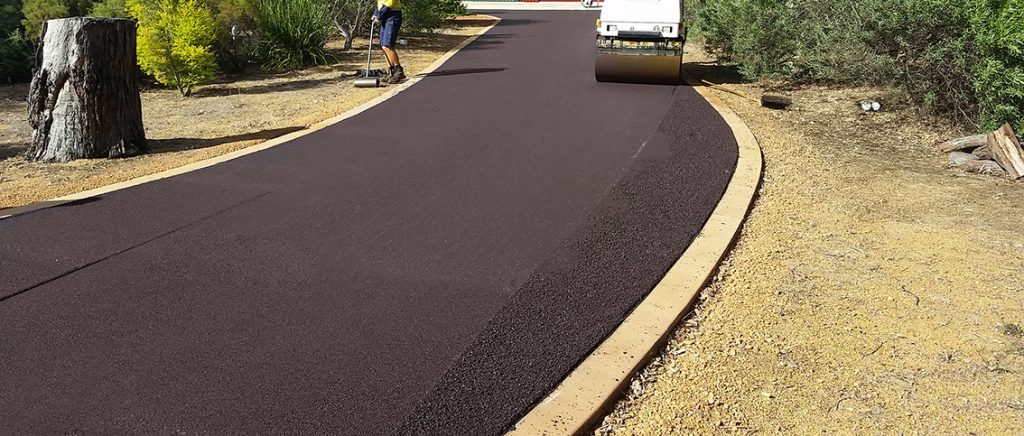Change Your Building's Landscape with Hot Mix Asphalt Paving Quality
Opening the Tricks of Warm Mix Asphalt Modern Technology
Discovering the midsts of warm mix asphalt modern technology reveals a globe where meticulous processes and precise formulations converge to form our roadways and framework. The blend of accumulations, binders, and fillers isn't just a building and construction job however a calculated orchestration of toughness and effectiveness. As we peer into the elaborate dance of parts, a tapestry of strength and sustainability unravels. However what lies beneath this surface area of asphaltic mastery, and what secrets wait to be unveiled in the world of paving developments?
Relevance of Hot Mix Asphalt
Hot Mix Asphalt plays an essential function in modern framework advancement due to its durability and cost-effectiveness. As the most typically made use of leading product for roadways, freeways, and car parking lots, Hot Mix Asphalt provides a variety of benefits that contribute to its value in building jobs.
The longevity of Warm Mix Asphalt originates from its make-up, which consists of accumulations, binder, and filler products that are very carefully chosen and mixed to satisfy particular performance requirements. This precise mix causes a versatile and strong pavement that can sustain constant usage without considerable wear and tear. Warm Mix Asphalt is 100% recyclable, additional improving its sustainability and environmental benefits. On the whole, the value of Hot Mix Asphalt in infrastructure growth can not be underrated, as it continues to be a cornerstone of modern-day building practices.
Elements of Asphalt Mixes
The composition of asphalt mixes consists of meticulously picked aggregates, binder, and filler materials that are vital for attaining specific performance demands. Accumulations are the key part of asphalt mixes, offering toughness and security. The binder, commonly bitumen or asphalt concrete, holds the accumulations together and supplies adaptability and resilience to the mix.
The combination and proportion of these elements play a considerable function in establishing the quality and performance of the asphalt mix. Engineers carefully design the mix to meet particular requirements, considering elements like traffic quantity, environment problems, and sidewalk life-span. Appropriate choice and balancing of aggregates, binder, and fillers are important for creating durable, lasting asphalt pavements.
Mixing and Manufacturing Strategies

Once the aggregates are selected, the binder, frequently asphalt cement, is included in bind the materials together. The binder's high quality and quantity considerably affect the mix's flexibility, resistance, and toughness to ecological aspects. Furthermore, fillers like her explanation hydrated lime or Portland concrete might be integrated to enhance specific characteristics of the asphalt mix, such as its workability or moisture resistance.
Throughout manufacturing, the aggregates and binder are heated up, commonly in between 250-325 ° F(121-163 ° C ), to assist in mixing and ensure correct coating of the accumulations. The mixing process has to be detailed to accomplish a homogeneous mixture that advertises the desired efficiency characteristics of the asphalt. Numerous methods, such as batch blending or drum mixing, are used to accomplish top notch and constant asphalt blends for building and construction jobs.
Factors Influencing Asphalt Performance
Variables affecting asphalt efficiency encompass a variety of variables that influence the sturdiness, long life, and overall high quality of asphalt sidewalks. One key element is the high quality of products made use of in the asphalt mix.

Ecological conditions additionally influence asphalt efficiency. Temperature variants, dampness infiltration, and website traffic loads can all influence the structural stability of the pavement. Layout considerations, such as pavement density and drainage, are necessary in ensuring the long-lasting efficiency of the asphalt pavement. By very carefully taking into consideration these service providers, engineers and variables can optimize asphalt performance and enhance the service life of sidewalks.
Lasting Practices in Asphalt Innovation

WMA permits for the production and positioning of asphalt blends at lower temperature levels compared to standard hot-mix asphalt, resulting in decreased power intake and greenhouse gas discharges. The usage of porous asphalt mixes can assist mitigate stormwater overflow concerns by allowing water to infiltrate via the pavement and into the ground, advertising all-natural water filtering and reenergize procedures.
Conclusion
Finally, hot mix asphalt technology plays an important duty in modern-day framework development due to its toughness and cost-effectiveness. By carefully balancing components, employing proper mixing techniques, and considering various factors, more helpful hints engineers can create top quality asphalt mixes that withstand heavy website traffic lots and harsh weather. Welcoming lasting methods, such as utilizing warm-mix technologies and recycled products, better boosts the ecological friendliness of asphalt technology.
Blending and production techniques in hot mix asphalt modern technology include the precise mix and handling of aggregates, binder, and fillers to create a high-performance and long lasting asphalt mix.Elements influencing asphalt efficiency include an array of variables that influence the sturdiness, longevity, and total high quality of asphalt pavements. Lasting methods in asphalt technology incorporate various campaigns aimed at reducing the ecological influence of asphalt production and paving procedures. By integrating reclaimed asphalt sidewalk (RAP) and recycled asphalt shingles (RAS) right into new asphalt blends, the industry can dramatically decrease the intake of raw materials and power, while also lowering landfill waste.
WMA permits for the production and positioning of asphalt mixes at reduced temperatures contrasted to traditional hot-mix asphalt, resulting in minimized energy usage and greenhouse gas exhausts.